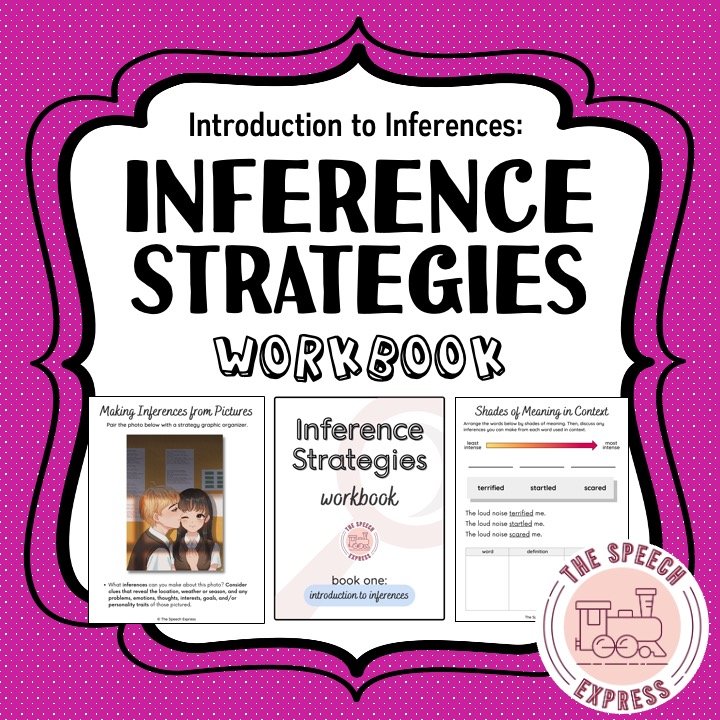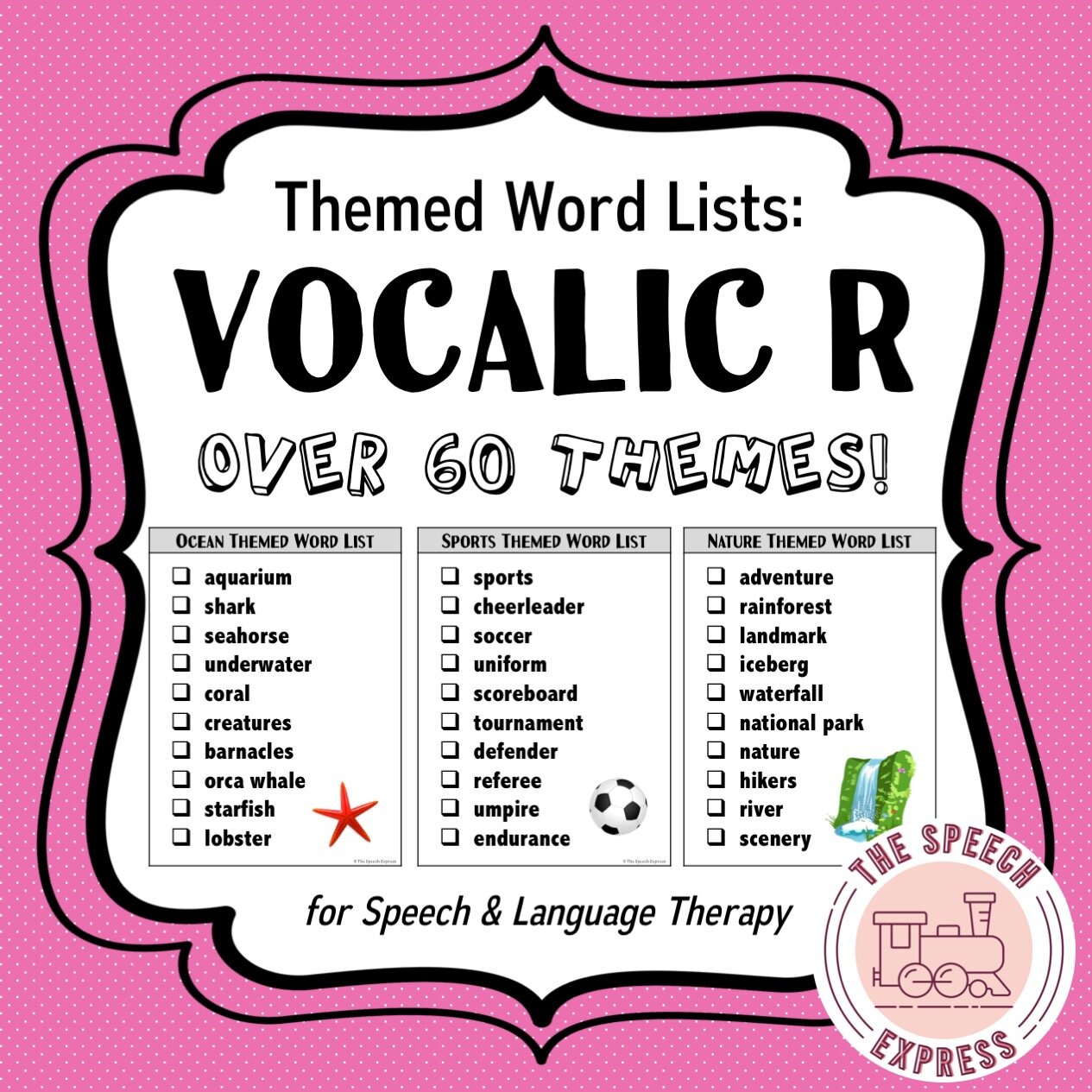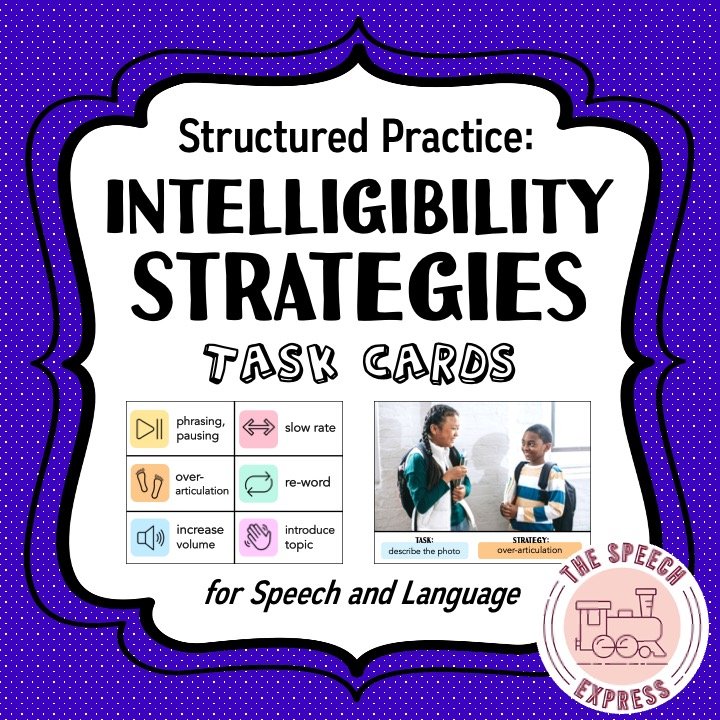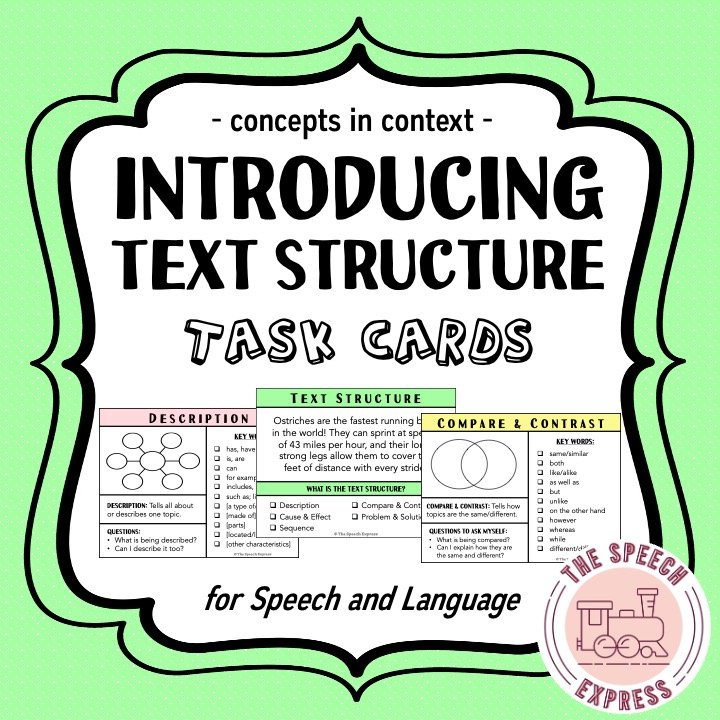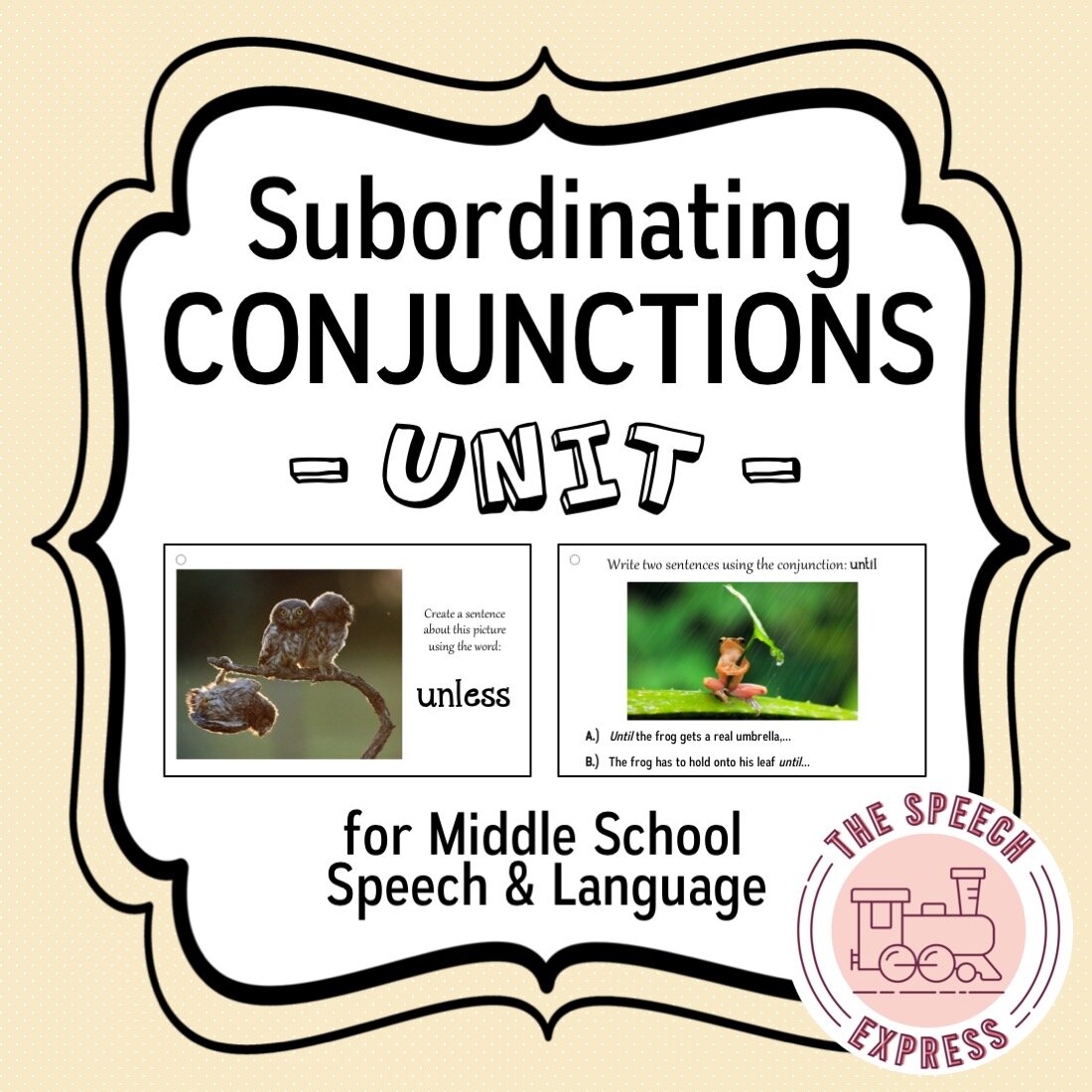Goal Bank
Having trouble creating goals for older students? Explore the goal bank below to get inspired!
Vocabulary
Mix and match the following skills, supports, and materials below to create an individualized IEP goal for vocabulary.
Formula: Given [materials] and [supports], NAME will [vocabulary skill] in [criterion*].
MATERIALS:
a tier 2 vocabulary word
a multiple meaning word
a category or topic
a list of 10 words
the context of a sentence
a picture or an object
a 4-6 sentence paragraph
a short story or article
a math word problem
directions to an assignment
SUPPORTS:
a verbal prompt
a graphic organizer
a familiar visual
a sentence frame (i.e. a ____ is a type of ____)
a dictionary
or INDEPENDENTLY
VOCABULARY SKILL:
use a vocabulary strategy (i.e. context clues, part of speech, affixes/roots, etc.) to infer the meaning of an unknown word
use context clues to determine the meaning of an unknown word
state a word’s part of speech
express a definition using the word’s prefix, suffix, and/or root
express five related words
describe using class, feature, and function
state five category members
identify one synonym and one antonym
state the meaning of 5 common prefixes and 5 common suffixes
state the meaning of an underline vocabulary word
EXAMPLES:
Given a sentence containing an unknown word and a familiar visual, [name] will use a vocabulary strategy - i.e. context clues, affixes/root words, part of speech, etc. - to infer the meaning of an unknown word in 80% of opportunities across three consecutive probing sessions.
Given a picture or an object and a sentence frame (i.e. __ is a type of __ that has a __ and is used for…), [name] will describe using class, feature, and function in 4/5 opportunities across three consecutive probes.
Given a word in the context of a sentence, [name] will independently state the part of speech - i.e. noun, verb, adjective, adverb - in 4/5 of opportunities across three consecutive therapy sessions.
*Criterion should be individualized based upon student’s current skill level. For examples of various criterion as applied to vocabulary, see example goals above.
Helpful Resources for Vocabulary:
Making Inferences
Mix and match the following skills, supports, and materials below to create an individualized IEP goal for making inferences.
Formula: Given [materials] and [supports], NAME will [inferencing skill] in [criterion*].
MATERIALS:
a photo or illustration
a wordless picture book
a photo paired with a sentence
one to two sentences of text
a 4-6 sentence paragraph
an auditory passage
a short fictional story or video
a nonfiction article or video
a variety of text and materials (i.e. stories, articles, poems, videos, etc.)
SUPPORTS:
a verbal prompt
a graphic organizer
a familiar visual
a sentence frame (i.e. I think __ because the text says __ and I know __)
a set of comprehension questions
or INDEPENDENTLY
INFERENCE SKILL:
combine visual evidence with background knowledge to make an inference
differentiate between literal and inferential questions
accurately respond to inferential questions
infer a character’s motivation or emotion
formulate an inference and identify one visual clue to support it
formulate an inference and identify the most important evidence from the text to support it
generate an inferential ‘why’ or ‘how’ question
infer why key vocabulary words were used in the text
support an inference with text evidence
make and describe one connection to their own background knowledge
determine text structure by underlining signal words (i.e. because, such as, first/next/last, therefore, etc.)
EXAMPLES:
Given a photo or illustration, [name] will independently generate an inferential ‘why’ or ‘how’ question in 4/5 opportunities across three consecutive probing sessions.
Given a short auditory passage and a set of comprehension questions, [name] will accurately differentiate between literal and inferential comprehension questions in 85% of opportunities across three consecutive probing sessions.
Given a variety of texts and materials (i.e. article, video, poem) and a graphic organizer, [name] will support an inference using text evidence in 3/4 opportunities across three consecutive probing sessions.
*Criterion should be individualized based upon student’s current skill level. For examples of various criterion as applied to inferencing, see example goals above.
Helpful Resources for Making Inferences:
Articulation & Intelligibility
During structured conversational tasks, [name] will use an intelligibility strategy - i.e. slow rate, over articulation, phrasing, increased volume, etc. - for 80% of utterances across three consecutive probing sessions.
[Name] will accurately produce the vocalic /r/ sound in words, phrases, and self-generated sentences in 90% of opportunities across three consecutive probing sessions.
During 5 minutes of unstructured conversation with peers/adults, [name] will accurately produce /s/ and /z/ in all word positions with no more than one corrective prompt across three consecutive probing sessions.
During a 5-minute conversation with the speech language pathologist, [name] will identify and repair communication breakdowns in 3/4 of opportunities across three consecutive probing sessions.
Helpful Resources for Articulation & Intelligibility:
Receptive Language
[Name] will use a listening comprehension strategy - i.e. visualization, paraphrasing, questioning, association, etc. - to accurately respond to 80% of WH questions about an auditory passage across three consecutive probing sessions.
Given instructions to a classroom task or assignment, [name] will accurately sequence three-step directions containing temporal terms (i.e. before, after) in 3/5 observed opportunities across three consecutive probing sessions.
During structured language activities, [name] will accurately identify the sequence of a 4-6 part story or task (i.e. the steps to an activity in speech, cooking activity, etc.) with 100% accuracy across three consecutive probing sessions.
Helpful Resources for Receptive Language:
Text Structure
Mix and match the following skills, supports, and materials below to create an individualized IEP goal for text structure.
Formula: Given [materials] and [supports], NAME will [text structure skill] in [criterion*].
MATERIALS:
a complex sentence containing key words
a 3-5 sentence paragraph
a short, non-fiction passage
a curriculum-based text
a variety of reading materials (i.e. article, textbook, story, classroom assignment, etc.)
SUPPORTS:
highlighted key words
a verbal prompt
a graphic organizer
a familiar visual
a sentence frame (i.e. this text compares __ and __)
or INDEPENDENTLY
INFERENCE SKILL:
state the text structure (i.e. sequence, description, compare and contrast, cause and effect, or problem and solution)
identify key words that signify the structure of the text
use the structure of the text to state the main idea
use the structure of the text to create a 3-sentence summary
EXAMPLE:
Given a short, non-fiction passage and a sentence frame, [name] will use the structure of the text to state the main idea across 4/5 consecutive probes.
*Criterion should be individualized based upon student’s current skill level. For examples of various criterion as applied to inferencing, see example goals above.
Helpful Resources for Text Structure:
Syntax
Mix and match the following skills, supports, and materials below to create an individualized IEP goal for syntax.
Formula: Given [materials] and [supports], NAME will [syntax skill] in [criterion*].
MATERIALS:
a coordinating/subordinating conjunction
an irregular verb
two simple sentences
a question word
a relative clause
a sentence containing a [verb/conjunction/relative clause/preposition/etc]
a short story
a picture scene or short video
an open-ended question
a classroom writing assignment
SUPPORTS:
a familiar visual
a graphic organizer
a word bank
three choices
a verbal prompt
a sentence starter
a writing prompt
or INDEPENDENTLY
SYNTAX SKILL:
combine two sentences using a coordinating [or subordinating] conjunction
complete a sentence using correct grammar and word order
edit a sentence to correct errors in grammar/word order
generate a complex sentence
generate a 5-sentence response
generate a declarative, imperative, interrogative, and exclamatory sentence
generate a question
edit their written work to include # conjunctions, relative clauses, adjectives, etc.
EXAMPLE:
Given an irregular verb (i.e. build, catch, etc.), [name] will independently use the present, past, and future tense form of that verb in a sentence for 4/5 verbs across three consecutive probing sessions.
When given two sentences and a familiar visual, [name] will combine those sentences using a subordinating conjunction in 90% of opportunities across three consecutive probing sessions.
Given a picture scene or short video, [name] will independently generate a complex sentence about the picture or video in 90% of opportunities across three consecutive probing sessions.
Given a relative clause and a sentence starter, [name] will complete the sentence using correct grammar and word order in 4/5 sentences across three consecutive probing sessions.
Given a short story and a familiar visual, [name] will generate three grammatically-correct questions in 4/5 opportunities across three consecutive probes.
Helpful Resources for Syntax:
Perspective-Taking & Self-Advocacy
During structured conversation opportunities, [name] will identify and advocate for their own unique communication style (i.e. I really like to talk about trains. If you’d like to switch to a different topic, please let me know) in 3/4 observed opportunities.
When presented with an academic or environmental learning challenge, [name] will advocate for their needs in order to be successful (i.e. use of a fidget, writing larger on the board, standing vs. sitting, clarification of directions, etc.) in 4/5 observed opportunities.
[Name] will independently explain 5 differences between neurodivergent and neurotypical communication styles across three consecutive therapy sessions.
Given a real or hypothetical problem-solving scenario, [name] will answer social inferencing questions from at least 2 different perspectives/points-of-view in 85% of opportunities across three consecutive probing sessions.
During structured teaching sessions (i.e. videos, conversation with peers/adults), [name] will identify the presence of sarcasm and express the possible meaning of the sarcastic remark in 80% of opportunities across three consecutive probing sessions.
Submit a Goal!
Do you have a goal that you’d like to see included in this goal bank? Submit it below for consideration. Thanks for making the lives of SLPs everywhere a little bit easier during IEP season!



